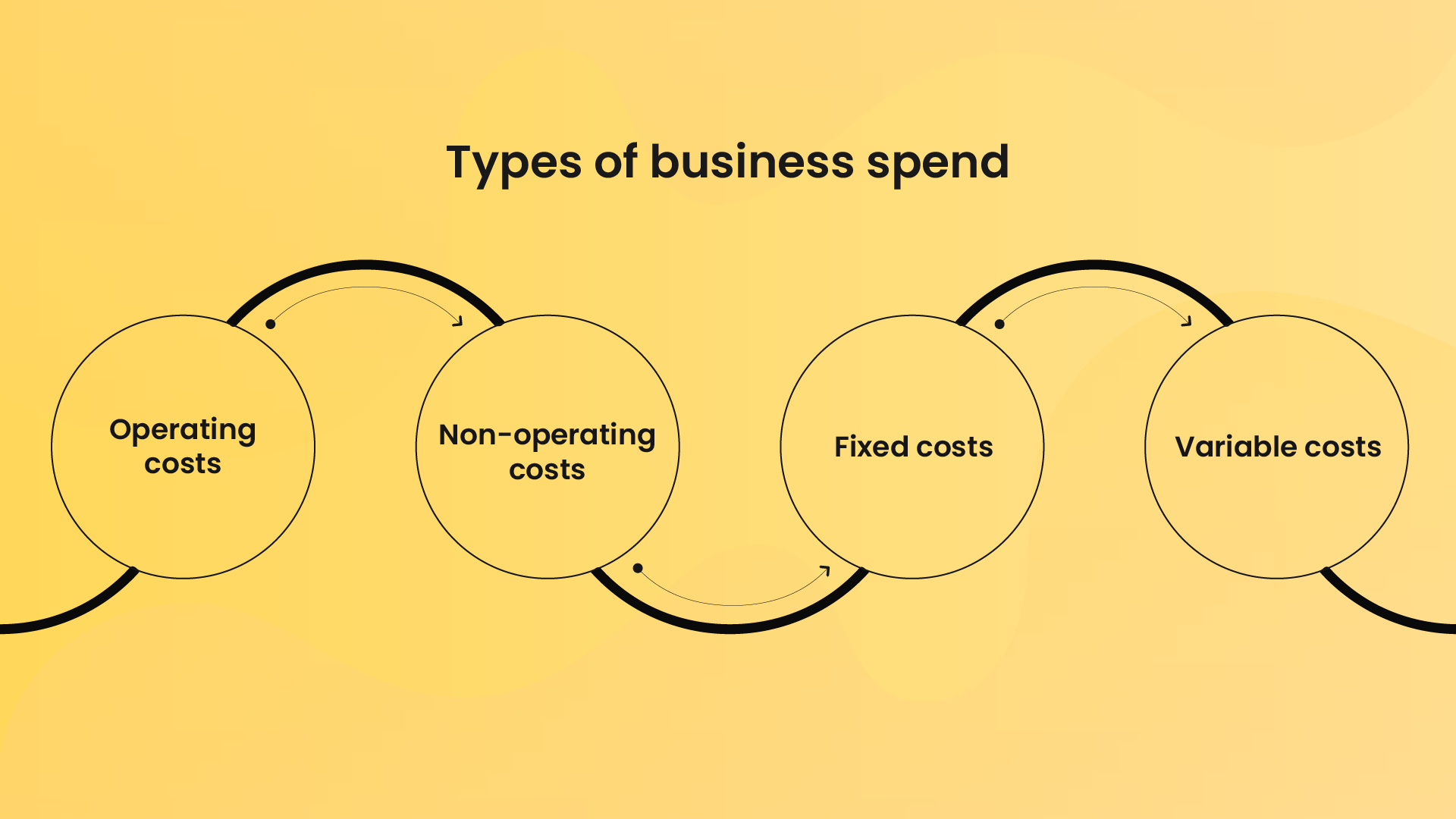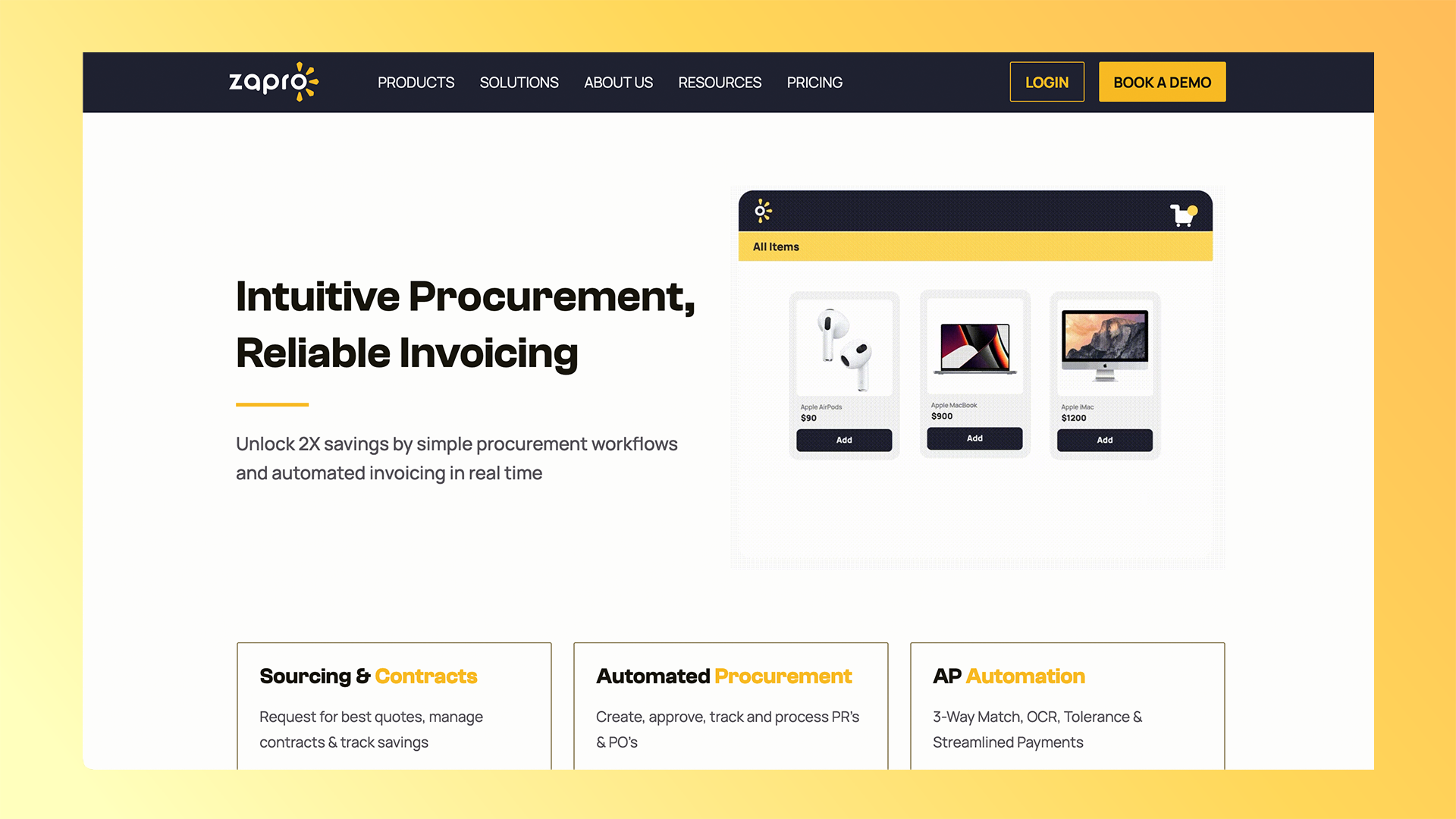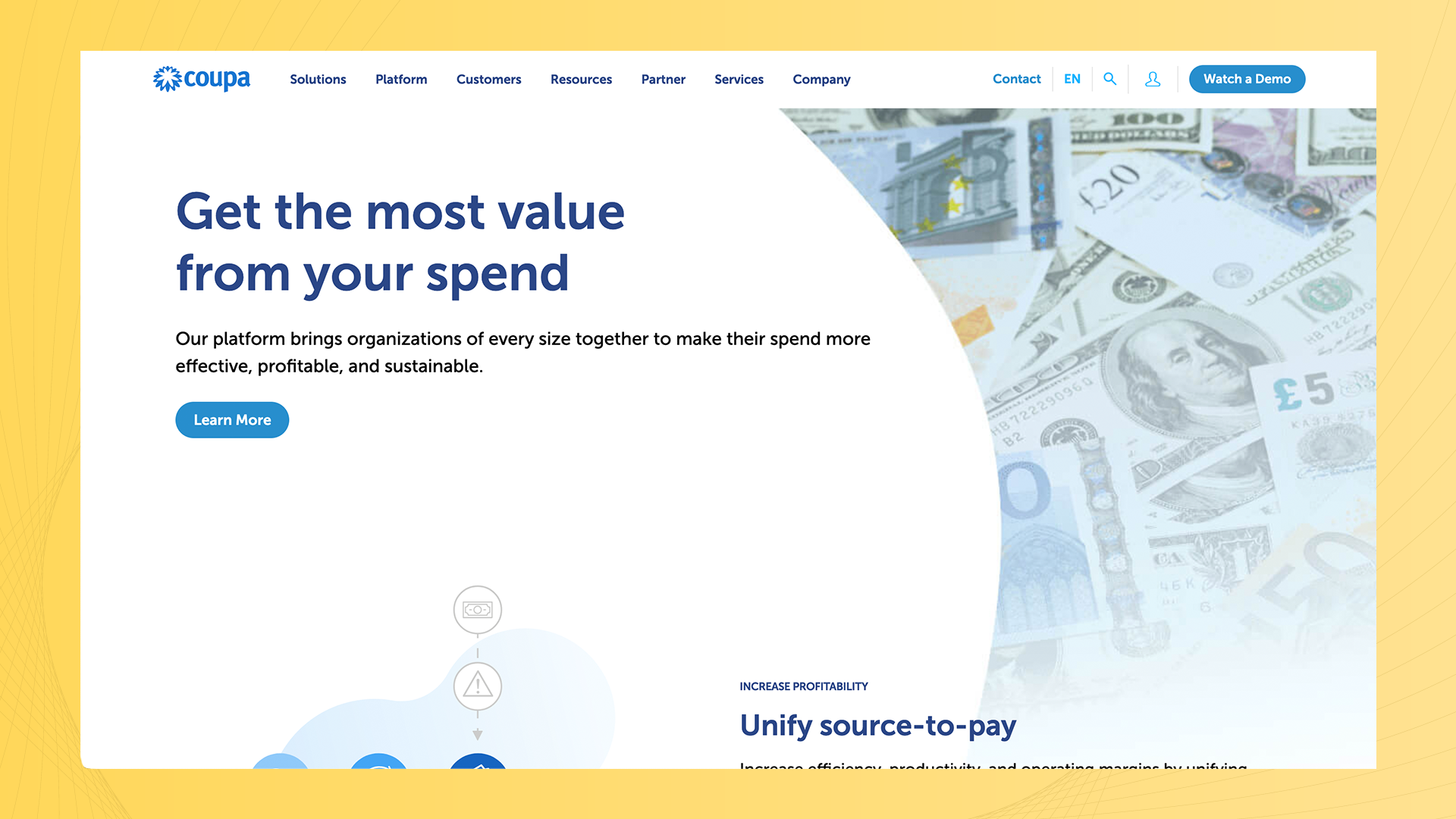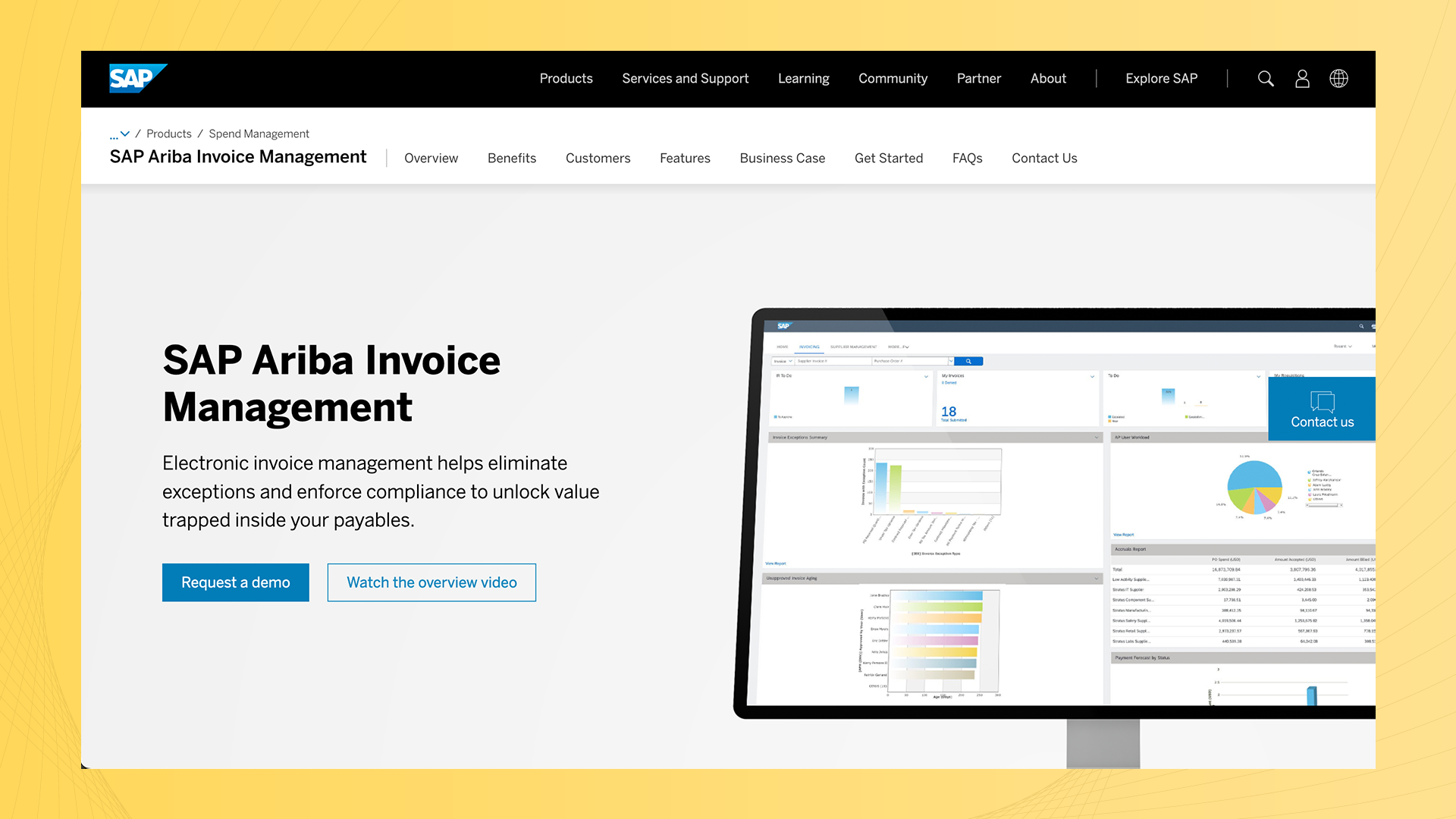Every penny counts in the world of business, and knowing how to make the most of your company’s resources is a game-changer. Ideally, you want a well-oiled machine where financial decisions are strategic, expenses are optimized, and growth becomes an achievable reality. That’s the power of effective Business Spend Management (BSM), and it’s more crucial now than ever before. In this comprehensive blog, we will navigate through the what, why, and how of Business Spend Management. We’ll explore its significance, reveal proven approaches, and introduce you to the latest tools that empower businesses to thrive in today’s competitive landscape. With that said, let’s get started!
What is Business Spend Management?
Business Spend Management, also known as BSM, is a comprehensive and strategic approach to overseeing all aspects of a company’s financial expenditures. This includes procurement, invoice management, vendor relationships, and other business-related costs.
At its core, BSM aims to efficiently track, manage, and optimize every aspect of a company’s spending.
By gaining a holistic view of financial activities across departments like procurement, accounts payable, employee salaries, and vendor management, businesses can extract maximum value from their investments.
BSM provides invaluable insights into expenditure patterns, allowing businesses to identify cost-saving opportunities, negotiate better contracts, and enhance overall financial performance.
Moreover, it enables companies to foster transparency and compliance while ensuring that financial decisions align with organizational goals.
Spend Management vs Expense Management
Understanding the distinction between Spend Management and Expense Management is crucial for businesses aiming to optimize their financial processes effectively.
While the two terms are often used interchangeably, they represent distinct approaches with different scopes and objectives.
Expense Management deals with the control and tracking of specific costs incurred by employees or departments. It typically involves tasks like expense reporting, approval workflows, and reimbursement processes, with the primary goal of ensuring individual expenses adhere to company policies and budgets. On the other hand, Spend Management takes a more comprehensive approach, encompassing all aspects of spending throughout the organization. It includes strategic planning, supplier negotiations, contract management, and expense analysis to optimize overall financial performance.
The objective is to align spending with business objectives, achieve cost savings, and foster long-term financial health.
Origins of BSM
Business Spend Management (BSM) has evolved along a trajectory similar to other key enterprise systems like Enterprise Resource Planning (ERP), Customer Relationship Management (CRM), and Human Capital Management (HCM).Â
Initially, businesses relied on manual methods or basic tools like spreadsheets to manage spending, which proved time-consuming and error-prone.
With technological advancements, specialized systems emerged to handle specific spending tasks, such as accounts payable, employee expense management, and procurement. Over time, these point solutions were integrated to create more comprehensive spending management systems.
BSM, acting as a central “command center,” unifies these systems into a cohesive whole, streamlining supplier records and enhancing financial control. By illuminating inefficiencies, BSM empowers businesses to extract greater value from financial processes and vendor relationships.
Through effective data tracking, risk reduction, and cost-saving, BSM simplifies complexities and paves the way for financial excellence.
Importance of Business Spend Management
BSM holds paramount importance as a strategic financial process that shapes the foundation of a successful organization.
By providing a comprehensive framework to monitor, manage, and optimize spending activities, BSM empowers businesses to achieve cost efficiency, enhance financial transparency, and align expenditures with broader business goals.
With a clear view of financial data and streamlined procurement practices, BSM enables companies to make well-informed decisions, mitigate risks, and ensure compliance with regulations.
This proactive approach to financial management not only fosters better financial control but also creates opportunities for strategic growth and sustained competitive advantage, making BSM an indispensable aspect of modern business operations.
Types of Business Spend
Understanding the various types of business spend is crucial for effective financial management. Each type plays a distinct role in a company’s financial landscape, and comprehending their differences is vital for making informed spending decisions.
When it comes to business spends, not all expenses are the same. Companies encounter different types of costs that impact their financial performance in unique ways.
Recognizing these categories allows businesses to develop targeted strategies to optimize spending, allocate resources wisely, and achieve greater financial efficiency.

1. Operating Costs
Operating costs, also known as operational expenses, encompass the day-to-day expenses required to run a business. These expenses are essential for the company’s core operations and directly contribute to its revenue generation.
Examples of operating costs include employee salaries, rent, utilities, raw materials, marketing expenses, and administrative costs.
Monitoring and managing operating costs are crucial to ensure ongoing business activities and maintain profitability.
2. Non-operating costs
Non-operating costs, in contrast, are expenses not directly tied to a company’s regular business operations. These costs arise from activities outside the company’s primary revenue-generating processes.
Common examples of non-operating costs include interest expenses on loans, taxes, and one-time expenses like legal settlements or restructuring costs. Though they do not directly impact daily operations, non-operating costs can significantly affect a company’s financial health and should be carefully monitored.
3. Fixed costs
Fixed costs are expenses that remain constant regardless of the level of production or business activity. These costs do not fluctuate over short periods and are usually associated with long-term commitments.
Examples of fixed costs include rent for a company’s office or manufacturing facility, insurance premiums, and certain employee salaries. While fixed costs provide stability to a business, they can also be a significant burden during economic downturns or periods of low activity.
4. Variable Costs
In contrast, variable costs are directly tied to the level of production or business activity. As the company produces more goods or services, variable costs increase proportionally.
Common examples of variable costs include raw materials, direct labor costs, and sales commissions.
Variable costs allow businesses to adapt to changes in demand and production levels but can present challenges in managing profit margins.
Benefits of Business Spend Management
BSM practices yield a multitude of invaluable benefits that directly impact a company’s financial health and overall success. From cost optimization to enhanced decision-making, BSM acts as a driving force in achieving financial excellence.
Here are some of the key benefits of adopting BSM:
- Cost optimization
- Improved financial stability
- Enhanced supplier management
- Streamlined procurement process
- Risk mitigation and compliance
- Strategic growth and competitive advantage
.webp)
1. Cost Optimization
BSM enables businesses to identify cost-saving opportunities and streamline spending across various departments.
By leveraging data insights and analytics, companies can negotiate better contracts with suppliers, optimize procurement processes, and eliminate unnecessary expenses.
This proactive approach to cost management enhances profitability and ensures resource efficiency.
2. Improved Financial Visibility
BSM provides a centralized view of financial data, allowing businesses to gain better visibility into their spending activities. With real-time insights, companies can track expenses, monitor budgets, and identify potential risks or discrepancies.
This heightened financial transparency fosters better decision-making and empowers stakeholders with accurate data for strategic planning.
3. Enhanced Supplier Management
Through BSM, companies can develop stronger and more transparent relationships with suppliers. Improved supplier management leads to better contract negotiations, reduced supply chain risks, and increased supplier compliance.
This, in turn, enhances the overall quality of products and services, contributing to customer satisfaction and loyalty.
4. Streamlined Procurement Process
BSM streamlines the procurement process, optimizing supplier selection, and purchasing practices. Automated workflows and approval systems ensure compliance with policies, reducing processing time and manual errors.
A well-organized procurement process ensures timely deliveries, minimizes inventory costs, and enhances operational efficiency.
5. Risk Mitigation and Compliance
With BSM, businesses can identify and mitigate financial risks, ensuring compliance with regulatory requirements and industry standards.
Advanced analytics help monitor supplier performance and financial stability, reducing the risk of disruptions or supply chain failures.
This proactive risk management approach safeguards a company’s reputation and financial stability.
6. Strategic Growth and Competitive Advantage
By optimizing spending, BSM allows companies to redirect resources toward strategic initiatives and business expansion. Cost savings can be reinvested in research and development, marketing, or talent acquisition, fostering innovation and competitive differentiation.
Challenges to Business Spend Management
While BSM offers a multitude of benefits, it also presents several challenges that businesses must address to maximize its effectiveness.
Overcoming these hurdles is crucial for maintaining financial control and achieving optimal spending practices.
Here are some of the key challenges faced in implementing BSM
4 Approaches to Business Spend Management
Businesses employ different approaches to manage their spending efficiently and strategically. Each approach focuses on specific stages of the spending process, streamlining operations and optimizing financial outcomes.
Let’s explore the four primary approaches to spend management:
.webp)
1. Source to pay (S2P)
Source to pay is a comprehensive approach that covers the entire spending lifecycle, starting from sourcing suppliers to the final payment. It begins with identifying sourcing needs, selecting vendors, and negotiating contracts.
Once the contract is in place, the procurement process commences, including purchase requisitions, approvals, and order placements. After receiving goods or services, the organization verifies and processes invoices, leading to payment to suppliers.
The S2P approach enhances procurement efficiency, promotes supplier collaboration, and reduces the risk of maverick spending.
2. Source to contract (S2C)
Source to contract focuses on the early stages of spending, from sourcing suppliers to establishing contractual agreements. This approach emphasizes supplier selection, negotiation, and contract management.
Once contracts are in place, the procurement process shifts to Source to Pay for purchasing and invoice management.
S2C streamlines the supplier relationship management process, improves procurement decision-making, and ensures compliance with negotiated terms and conditions.
3. Invoice to pay (I2P)
Invoice to pay centers around managing the invoicing and payment stages of spending. It starts with the receipt and validation of invoices, ensuring they align with the agreed-upon contracts or purchase orders.
The organization then processes the invoices for approval and payment, keeping track of payment schedules and ensuring timely settlement.
Adopting I2P streamlines accounts payable processes, reduces manual errors, and enhances cash flow management.
4. Procure to pay (P2P)
Procure to Pay is a comprehensive approach covering the entire procurement process, starting from requisition to final payment. It begins with identifying purchasing needs, submitting purchase requisitions, and obtaining necessary approvals.
After approvals, purchase orders are issued to suppliers, and goods or services are received. The organization then verifies invoices, matches them with purchase orders, and processes payments to suppliers.
P2P streamlines procurement operations, improves spend visibility, and reduces procurement cycle times.
Top 3 Business Spend Management Platform
There are numerous spend management platforms that are available in the market. We handpicked the top 3 based on factors such as flexibility, features, and integrations with other platforms.
Let’s take a look at each of them.
1. Zapro

Zapro.ai is a leading spend management platform that offers innovative solutions to help businesses effectively manage their spending activities and optimize financial performance.
With a focus on procurement, invoice management, vendor management, and business expenditures, Zapro empowers organizations to gain greater visibility, make data-driven decisions, and achieve cost savings.
Let’s explore how Zapro aids in Business Spend Management:
Zapro’s spend management platform plays a pivotal role in transforming business spend management strategies.
By enabling efficient supplier selection, cost optimization, risk management, and providing real-time insights, Zapro empowers organizations to drive efficiency, improve financial stability, and make data-driven decisions for sustained growth and success.
2. Coupa

Coupa Business Spend Management is a cloud-based platform that offers a suite of features to help organizations manage and optimize their corporate spending. Power users and suppliers can manage business spending activities centrally using Coupa’s Business Spend Management (BSM) platform.
With Coupa, your end users, consumers, admins, and IT teams will have the simplicity and adaptability they need to be successful, thanks to the platform’s comprehensiveness in managing business expenditures.
Coupa is an enterprise- and SMB-friendly spending management tool. It is designed to be an end-all-be-all tool for controlling company spending.
Coupa’s flexible, open-architecture software makes it simple to modify for your specific needs. Large corporations like Salesforce, Unilever, Groupon, and Aon use it, along with nonprofit, retail, and manufacturing organizations.
Top features:
- Supplier information management
- Contract lifecycle management
- Strategic sourcing & procurement
- Inventory management
- Expense management & payment support
- Predictive spend analytics and data insights
Their online solution is fully mobile, supporting both Android and iOS. It connects with approximately 35 different Enterprise Resource Planning (ERP) software, including DocuSign, KPMG, MuleSoft, NetSuite, and Salesforce.
Coupa’s adaptability is illustrated by its Business Service Management (BSM) choices that are multilingual, multicurrency, and multi-organizational, as well as the 360-degree insight it provides across numerous business processes.
Pricing:
Their pricing is flexible and depends on quotes, and they provide thorough assistance with setting up and using their software.
3. Ariba

Ariba Business Spend Management is a cloud-based platform offered by SAP Ariba. AP Ariba is a configurable, all-encompassing procurement platform with a rich range of features to meet your sourcing, procurement, and payment requirements.
Having existed for almost 25 years, they are recognized as a leader in their industry. This solution appeals to giant corporations such as JP Morgan Chase, Deloitte, and Coca-Cola, but it is also utilized by medium-sized and small enterprises worldwide.
Top features:
- Supplier collaboration
- Analytics & reporting
- Strategic sourcing
- Procurement
- Supply chain management
- Spend management
This cloud-based procurement platform is compatible with Mac and Windows computers and Android and iOS mobile devices through seamless integration with SAP-specific ERP management software.
The Ariba Network, a global commercial marketplace, is also a part of this package, expanding the possibilities for finding partners and conducting business with them.
Pricing:
SAP Ariba offers flexible pricing based on the requirements of each individual client and provides extensive assistance through an online knowledge base.
Streamline all your spend management effortlessly with Zapro
Business Spend Management (BSM) is essential for optimizing financial processes, driving cost savings, and ensuring overall financial stability.
By centralizing spending activities, leveraging data analytics, and addressing challenges proactively, organizations can streamline spend management effectively and unlock their financial potential for sustained success.
Zapro streamlines spend management effortlessly through its unified platform that centralizes all spending activities, automates processes, and provides valuable insights for cost-saving opportunities. With seamless integration and real-time visibility, businesses can optimize resources and achieve financial goals with ease.
